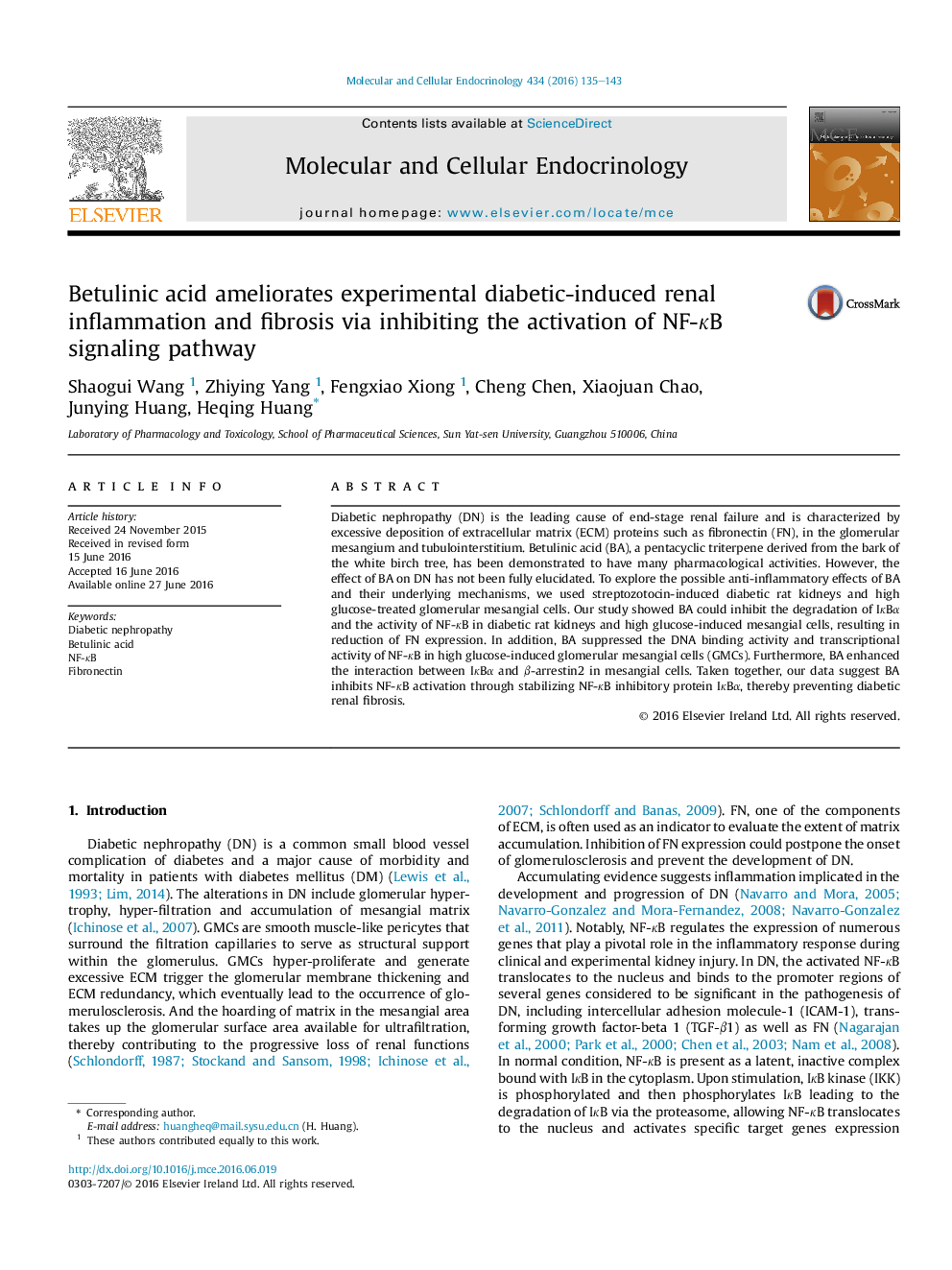| Article ID | Journal | Published Year | Pages | File Type |
|---|---|---|---|---|
| 2195504 | Molecular and Cellular Endocrinology | 2016 | 9 Pages |
•Betulinic acid ameliorated diabetic nephropathy in the streptozocin-induced diabetic rats.•Betulinic acid suppressed the expression of fibronectin in both diabetic rat kidneys and high glucose-treated GMCs.•Betulinic acid blocked high glucose-induced NF-κB activity.
Diabetic nephropathy (DN) is the leading cause of end-stage renal failure and is characterized by excessive deposition of extracellular matrix (ECM) proteins such as fibronectin (FN), in the glomerular mesangium and tubulointerstitium. Betulinic acid (BA), a pentacyclic triterpene derived from the bark of the white birch tree, has been demonstrated to have many pharmacological activities. However, the effect of BA on DN has not been fully elucidated. To explore the possible anti-inflammatory effects of BA and their underlying mechanisms, we used streptozotocin-induced diabetic rat kidneys and high glucose-treated glomerular mesangial cells. Our study showed BA could inhibit the degradation of IκBα and the activity of NF-κB in diabetic rat kidneys and high glucose-induced mesangial cells, resulting in reduction of FN expression. In addition, BA suppressed the DNA binding activity and transcriptional activity of NF-κB in high glucose-induced glomerular mesangial cells (GMCs). Furthermore, BA enhanced the interaction between IκBα and β-arrestin2 in mesangial cells. Taken together, our data suggest BA inhibits NF-κB activation through stabilizing NF-κB inhibitory protein IκBα, thereby preventing diabetic renal fibrosis.
